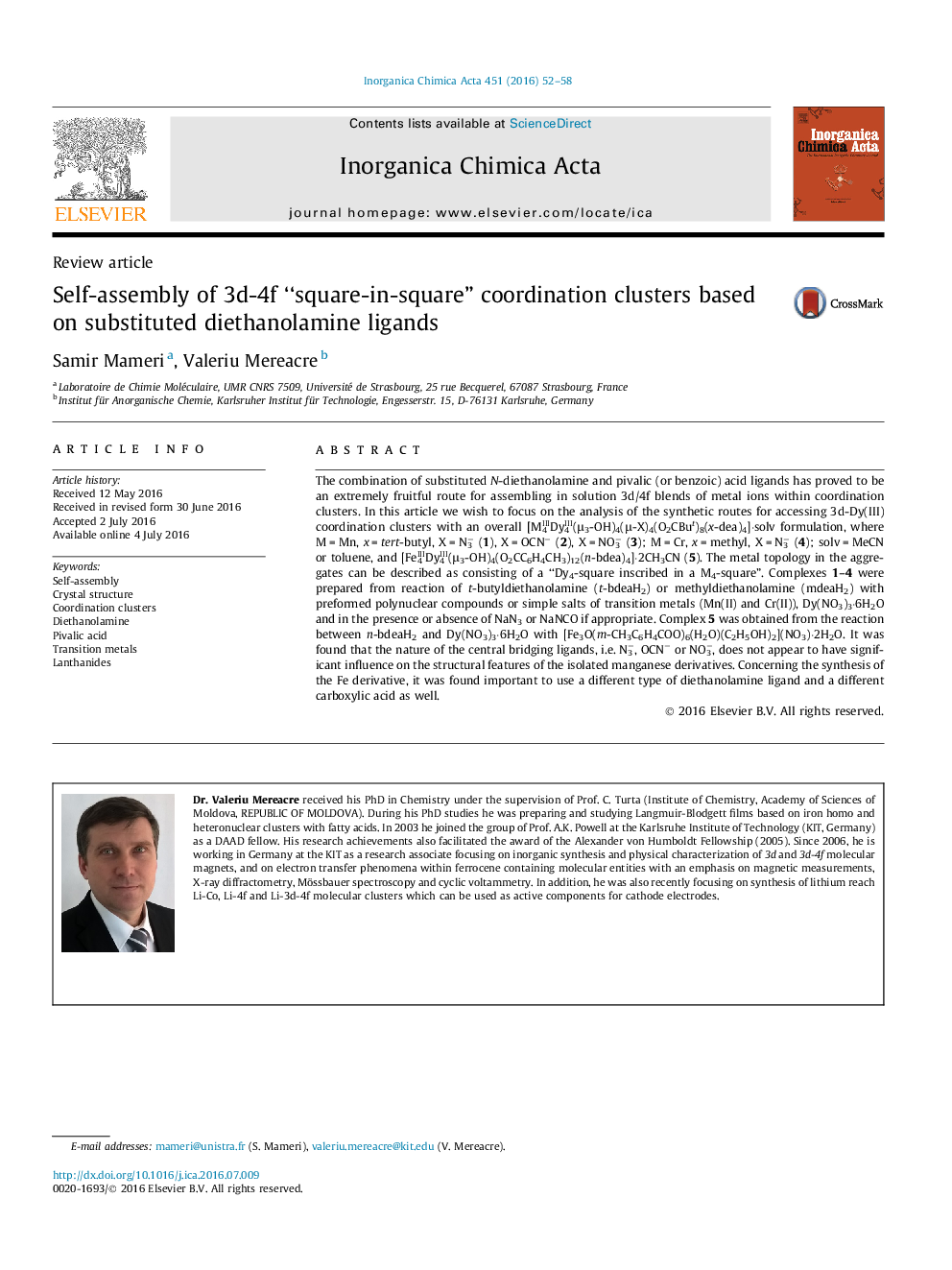| کد مقاله | کد نشریه | سال انتشار | مقاله انگلیسی | نسخه تمام متن |
|---|---|---|---|---|
| 1311919 | 1499138 | 2016 | 7 صفحه PDF | دانلود رایگان |

• Octanuclear 3d-Dy(III) coordination clusters were discussed.
• All compounds have a “square-in-square” topology.
• Diethanolamine derivatives and carboxylic acids were used as ligands.
The combination of substituted N-diethanolamine and pivalic (or benzoic) acid ligands has proved to be an extremely fruitful route for assembling in solution 3d/4f blends of metal ions within coordination clusters. In this article we wish to focus on the analysis of the synthetic routes for accessing 3d-Dy(III) coordination clusters with an overall [MIII4DyIII4(μ3-OH)4(μ-X)4(O2CBut)8(x-dea)4]·solv formulation, where M = Mn, x = tert-butyl, X = N3− (1), X = OCN− (2), X = NO3− (3); M = Cr, x = methyl, X = N3− (4); solv = MeCN or toluene, and [FeIII4DyIII4(μ3-OH)4(O2CC6H4CH3)12(n-bdea)4]·2CH3CN (5). The metal topology in the aggregates can be described as consisting of a “Dy4-square inscribed in a M4-square”. Complexes 1–4 were prepared from reaction of t-butyldiethanolamine (t-bdeaH2) or methyldiethanolamine (mdeaH2) with preformed polynuclear compounds or simple salts of transition metals (Mn(II) and Cr(II)), Dy(NO3)3·6H2O and in the presence or absence of NaN3 or NaNCO if appropriate. Complex 5 was obtained from the reaction between n-bdeaH2 and Dy(NO3)3·6H2O with [Fe3O(m-CH3C6H4COO)6(H2O)(C2H5OH)2](NO3)·2H2O. It was found that the nature of the central bridging ligands, i.e. N3−, OCN− or NO3−, does not appear to have significant influence on the structural features of the isolated manganese derivatives. Concerning the synthesis of the Fe derivative, it was found important to use a different type of diethanolamine ligand and a different carboxylic acid as well.
Utilizing supramolecular self-assembly method, a series of new 3d-4f “square-in-square” coordination clusters derived from N-substituted diethanolamine and pivalic (benzoic) acid based ligands were obtained, crystallized and their structures elucidated. The five examples presented in this paper, which display a “Dy4-square-in-M4-square” core topology, do indicate this is a favourable structural motif which may further be exploited in the construction of other more complex supramolecular architectures whose self-assembly may notably be directed by rather small variations of the reaction conditions.Figure optionsDownload as PowerPoint slide
Journal: Inorganica Chimica Acta - Volume 451, 1 September 2016, Pages 52–58